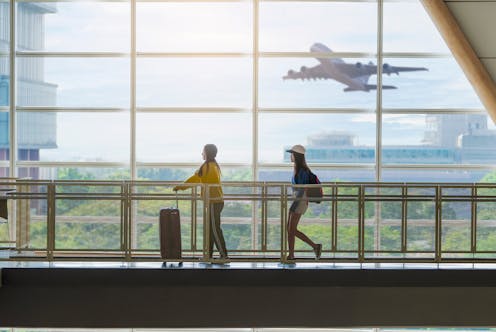As hopes of international students' return fade, closed borders could cost $20bn a year in 2022 – half the sector's value
- Written by Peter Hurley, Policy Fellow, Mitchell Institute, Victoria University

A globally rampant COVID-19 pandemic and problems with Australia’s vaccine roll-out suggest our international education sector is facing a continued fall in enrolments through 2021 and into 2022. New research from the Mitchell Institute forecasts the sector’s biggest losses are yet to come. It has found a third academic year of no international students would cost Australia about A$20 billion a year, half its pre-pandemic value.
This is not just a university problem. Most of the economic value of the international education sector comes from students’ spending in the wider economy.
It’s becoming clear the fate of the international education sector rests on Australia’s border policy. The most important factor in the sector’s recovery is the rate at which both new and returning international students can enter the country.
What is happening to enrolments?
International student enrolments fell 14% between November 2019 and November 2020, from 586,724 to 502,202.
This fall is likely to continue as new students fail to take the places of those who are finishing.
The chart below shows the trends in enrolled international students since November 2020 when many were due to finish their course. It also includes forecast new students based on the average number of new enrolments between July and November 2020.
Our modelling suggests international student enrolments will continue to fall as currently enrolled students finish their courses. Some new students are enrolling online. However, their numbers are not enough to replace those finishing their courses.
Australian government data suggest the number of new students enrolling online while overseas is actually quite low.
Between July and November 2020, about 17,000 new students enrolled while overseas. During the same period in 2019, about 115,000 new students enrolled.
How will this affect the value of international education?
Australian Bureau of Statistics (ABS) data show the value of Australia’s onshore international education sector before the pandemic was A$40.3 billion. By the end of 2020, this had fallen by A$8.6 billion, or 21%, to A$31.7 billion.
However, it is important to note the value of the 150,000 international student visa holders who are outside Australia. While these students are not spending in the Australian economy, they are paying fees.
ABS data show the value of international students studying online while offshore increased from A$9 million in 2019 to A$3.3 billion in 2020.
This rise was largely caused by existing students stuck abroad and shifting to online learning, not new students.
The contribution of students studying online has helped to stem education institutions’ losses. However, the Mitchell Institute research suggests the biggest falls are yet to come.
The chart below uses available data sources to estimate the change in the value of the international education sector in 2021 and 2022.
It shows online enrolments have reduced losses in the sector, particularly in 2020. However, this is unlikely to continue.
Read more: 2021 is the year Australia's international student crisis really bites
If borders remain largely closed through 2022, the economic value of the international education sector is on track to shrink by almost 50% to A$20.5 billion by the end of 2022.
It’s all about the rate of return
Allowing some international students into the country will not be enough to halt the decline in enrolments. What will be most important is the rate at which new international students can return.
Between March 2020 and March 2021, the number of international student visa holders dropped by about 140,000. This suggests about 70,000 new international students need to enter Australia every six months simply to stop enrolments falling further.
It is far from clear this will happen. For instance, in February 2021, the limit on all international arrivals into Australia was about 6,300 per week.
At this rate, it would take about six months using Australia’s entire hotel quarantine capacity simply to process the current backlog of the 150,000 international student visa holders who are outside Australia.
This is before dealing with the challenge of enabling new students to enter Australia.
Read more: How unis can use student housing to solve international student quarantine issues
The chart below shows the monthly arrivals in Australia since July 2017. Two groups are shown: Australian residents returning from long-term trips and holidays, and visitors whose main reason for travel to Australia is education-related.
The chart shows the strong seasonal element to international arrivals for both residents and non-residents, with peaks coinciding with school and university holidays.
It also shows the dramatic impact of the pandemic on arrival numbers. Arrivals by both residents and international students have fallen by over 99%.
Charles Darwin was the first university to organise the return of any international students to Australia – a mere 63 in late 2020.Australia’s border policy will affect any part of society or the economy that relies on the movement of people across borders. This includes international tourism, skilled migrants and the aviation sector.
If Australia can find a way for international students to enter the country safely, Australians might also be able to come and go in greater numbers.
Authors: Peter Hurley, Policy Fellow, Mitchell Institute, Victoria University



